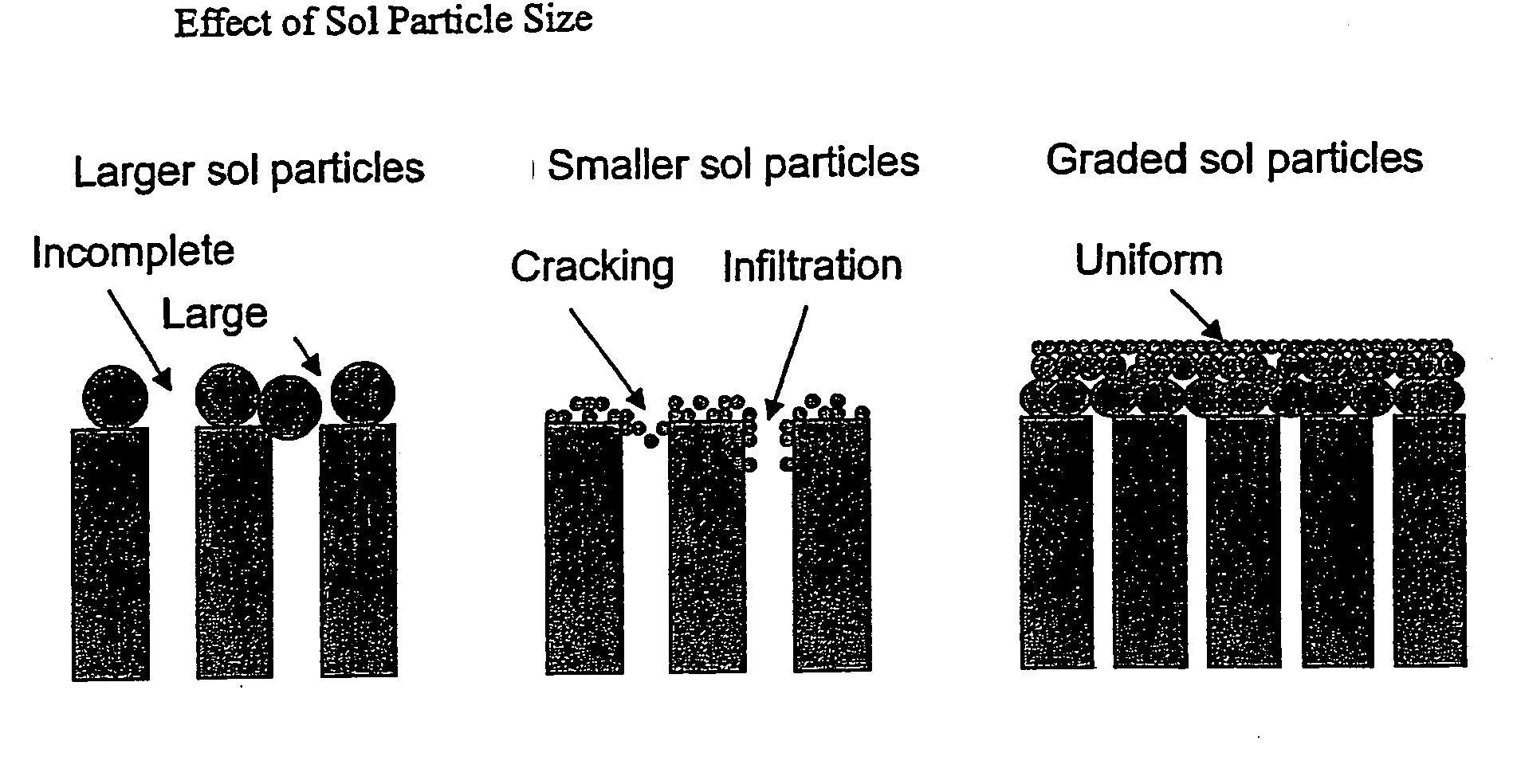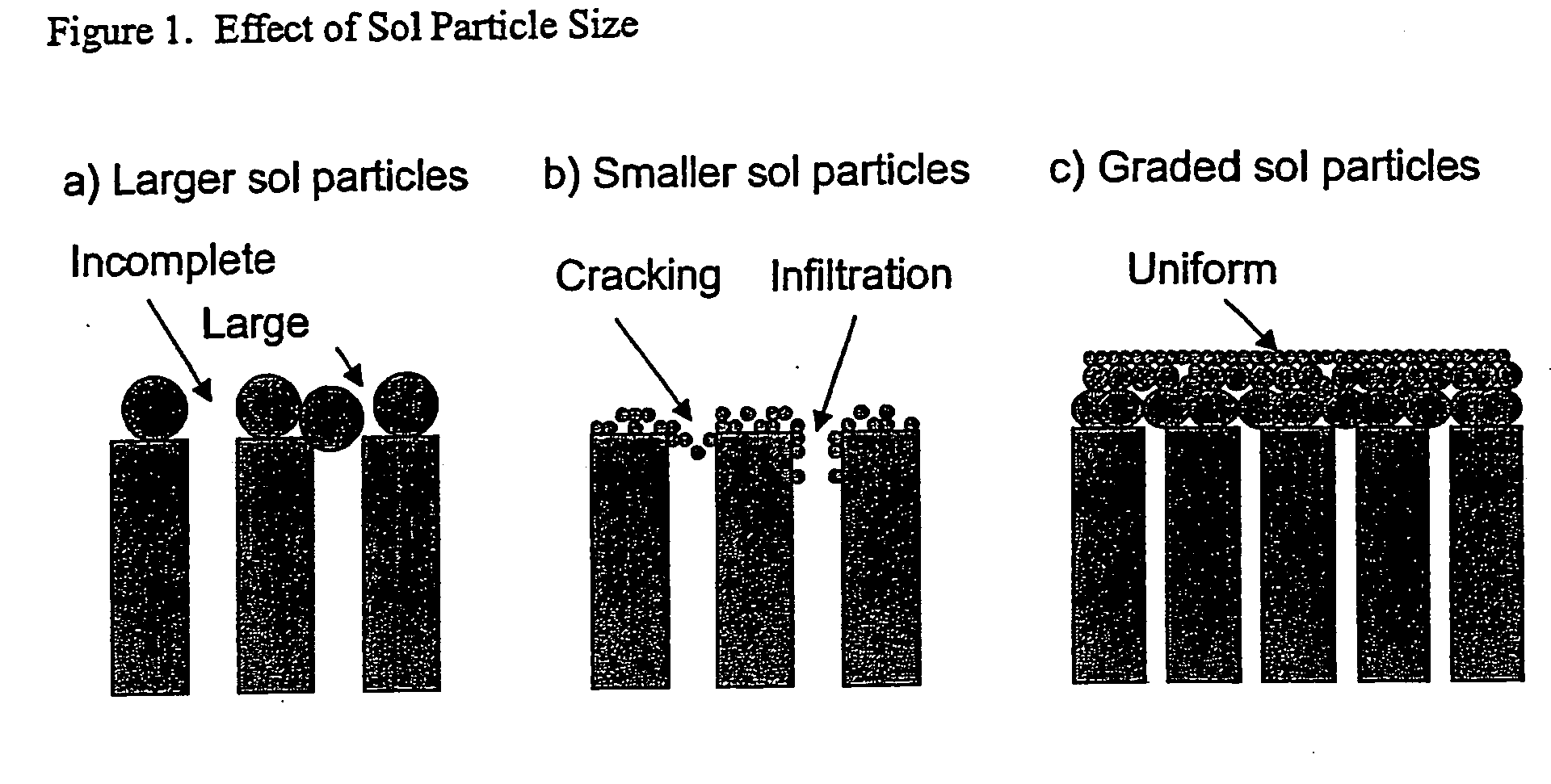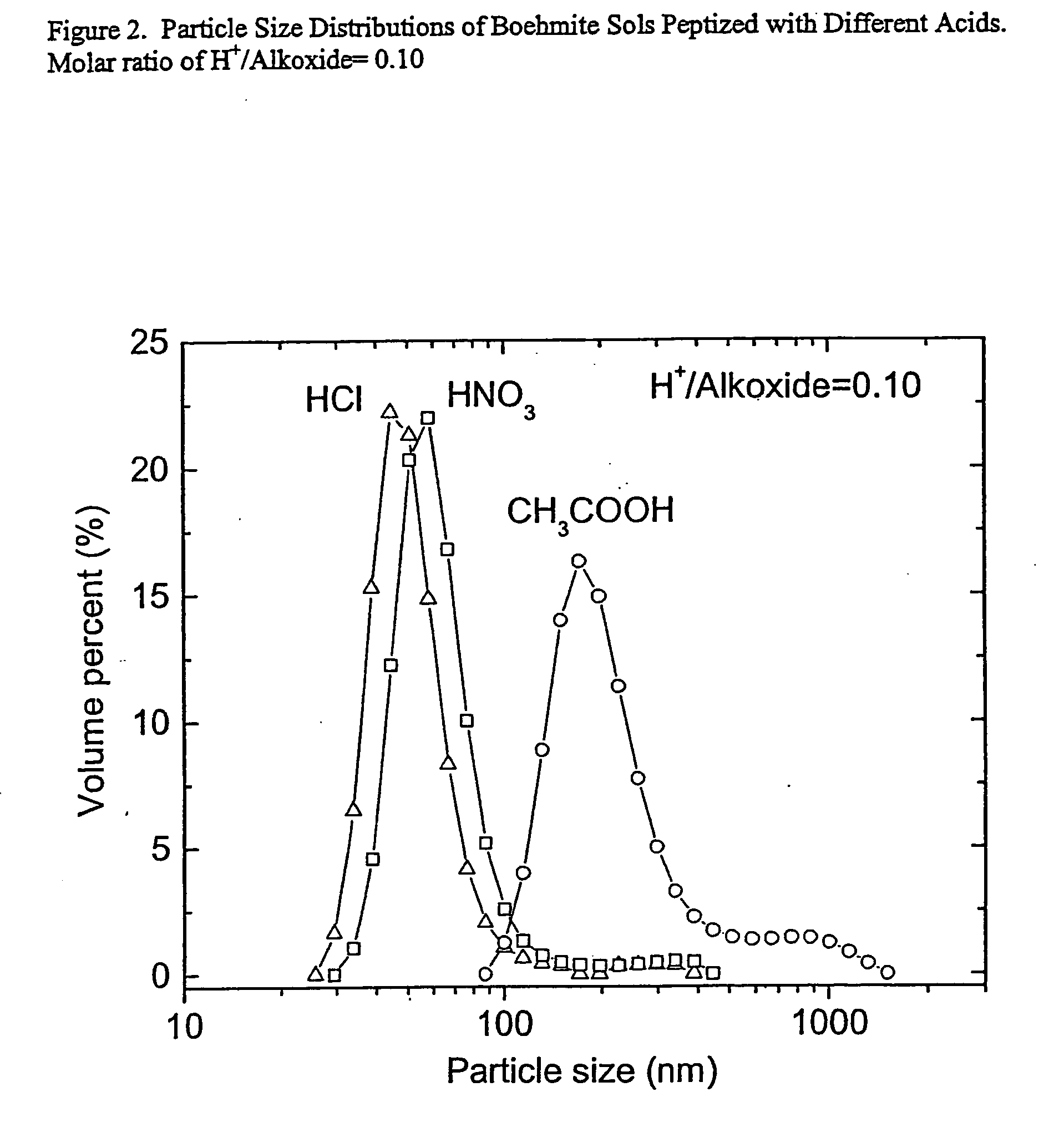Hydrogen-selective silica-based membrane
a silica-based membrane and hydrogen-selective technology, applied in the field of inorganic membranes, can solve the problems of limited frequent and undesirable hydrogen sulfide and ammonia, and limited quality of the sol layer, and achieve high hydrogen selectivity and permeance
- Summary
- Abstract
- Description
- Claims
- Application Information
AI Technical Summary
Benefits of technology
Problems solved by technology
Method used
Image
Examples
example 1
[0055] This example and the following two examples describe the synthesis of boehmite sols in accordance with a preferred embodiment. It should be noted that the dipping solutions, consisting of the described sols are dilute, not gels. The use of dilute solutions gives rise to thin intermediate layers.
[0056] A boehmite sol was prepared by adding 0.2 mol of aluminum isopropoxide (Aldrich, 98+%) to 300 ml of distilled water at room temperature. The mixture was stirred at high speed and heated to 353 K within 30 min. The alkoxide was hydrolyzed at this temperature for 24 hours, and then the temperature of the mixture was increased to 365 K, after which the flask was opened for 1.5 hours to allow volatilization of the alcohol. The flask was then closed again and the solution was stirred at 365 K for 1 hour with refluxing. A predetermined quantity of nitric acid (VWR, 68.0-70.0%), hydrochloric acid (GR, 36.5-38.0%) or acetic acid (GR, 99.7%) was added to the solution to give a 0.10 mola...
example 2
[0058] Boehmite sols were prepared using the method described in Example 1, except the hydrolyzed solution was peptized with various quantities of acetic acid to give molar ratios of H+ / Alkoxide of 0.03, 0.04, 0.055, 0.07, 0.10, 0.15 and 0.25. FIG. 6 shows the particle size distributions in these seven boehmite sol solutions. When acetic acid was used as the peptizing agent, the median particle size of the resulting boehmite sols increased from 65 nm to 950 nm with decreasing molar ratio of H+ / Alkoxide from 0.25 to 0.03. Thus, lower acetic acid concentration tends to favor the formation of larger particles. The two boehmite sols which were peptized with acetic acid at molar ratios of H+ / Alkoxide of 0.04 and 0.07, and which had median particle sizes of 630 and 200 μm, respectively, were designated as BS630 and BS200. BS630 and BS200 were also used for the preparation of the intermediate layers of gamma-alumina in membrane substrates, later described.
example 3
[0059] Boehmite sols were prepared using the method described in Example 1, except the aluminum isopropoxide was hydrolyzed at 353 K for various times (0.5, 3, 24 and 72 hours) and the solution was peptized for 20 hours with acetic acid at a molar ratio of H+ / Alkoxide of 0.15. FIG. 7 shows the particle size distributions in these boehmite sol solutions. As the hydrolysis time increased from 0.5 hours to 72 h, the median particle size of the resulting boehmite sols increased from 13 nm to 120 nm. The boehmite sol which was hydrolyzed at 353 K for 3 hours and peptized with acetic acid at a molar ratio of H+ / Alkoxide of 0.15 and which had a median particle size of 40 nm was designated as BS40. BS40 was used for the preparation of the immediate layers of gamma-alumina in membrane substrates, later described.
PUM
 Login to View More
Login to View More Abstract
Description
Claims
Application Information
 Login to View More
Login to View More - R&D
- Intellectual Property
- Life Sciences
- Materials
- Tech Scout
- Unparalleled Data Quality
- Higher Quality Content
- 60% Fewer Hallucinations
Browse by: Latest US Patents, China's latest patents, Technical Efficacy Thesaurus, Application Domain, Technology Topic, Popular Technical Reports.
© 2025 PatSnap. All rights reserved.Legal|Privacy policy|Modern Slavery Act Transparency Statement|Sitemap|About US| Contact US: help@patsnap.com



